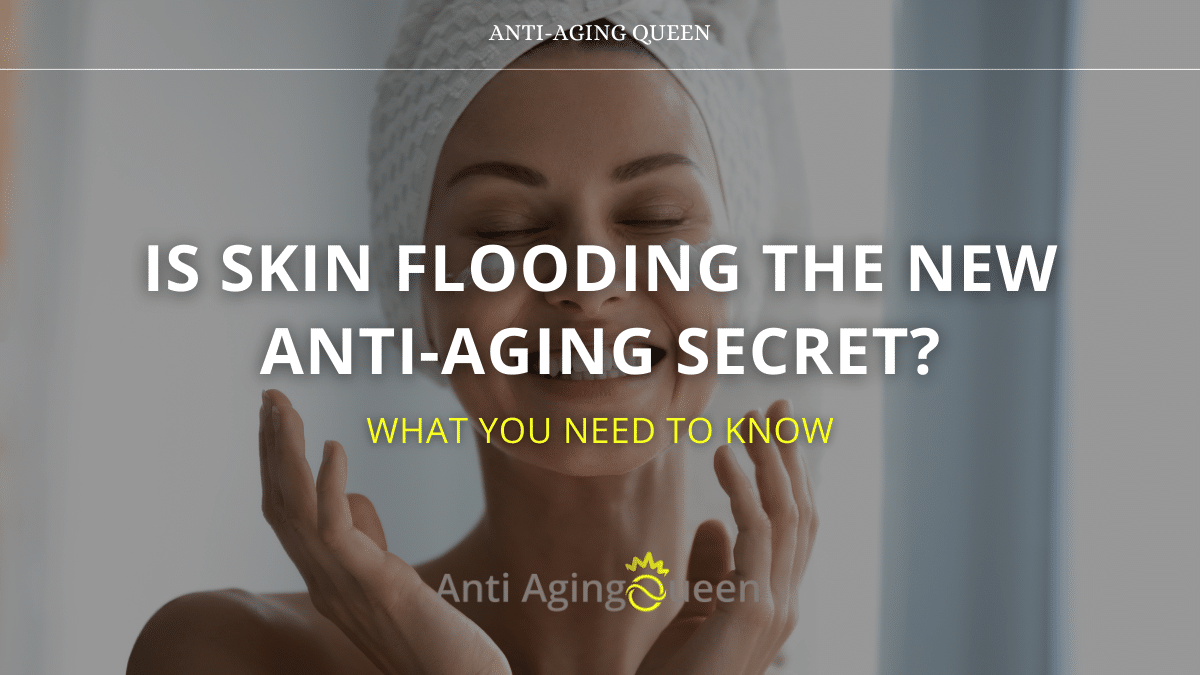There’s a new skincare trend taking over TikTok—and this time, it’s not just about going viral, it’s about reversing time on your skin. Say hello to skin flooding, the ultra-hydration technique that’s being hailed as the next big anti-aging secret.
But does skin flooding really deliver youthful, radiant skin? Or is it just another trend that looks good on camera but doesn’t live up to the hype? Let’s dive into what skin flooding is, why it’s trending, and how it could help you fight fine lines and dryness—without breaking the bank. For those aiming to keep their skin youthful, incorporating retinol in your 20s could also be a strategic move alongside this technique.
What Is Skin Flooding?
Skin flooding is a skincare technique that involves layering hydrating products—starting with damp skin—to “flood” your face with moisture. The goal? To boost hydration deep into your skin’s layers and lock it in with nourishing ingredients. This method aligns well with using natural products good for skin to ensure compatibility and effectiveness.
The Typical Skin Flooding Routine:
- Dampen your skin with water or a facial mist
- Apply a lightweight hydrating serum (like hyaluronic acid)
- Follow with a richer serum or toner (glycerin, panthenol, peptides)
- Seal everything in with a moisturizer or barrier cream
This method doesn’t require fancy products—it’s about the order and timing to maximize moisture absorption. It’s particularly effective when paired with a best night moisturizer guide to lock in hydration during your beauty sleep.
How Skin Flooding Helps with Anti-Aging
While skin flooding may sound like a trend, it actually supports key pillars of anti-aging:
1. Deep Hydration = Plump, Younger-Looking Skin
Dehydrated skin makes fine lines and dullness more visible. By deeply hydrating the skin, flooding helps maintain a plump, radiant complexion—reducing the appearance of wrinkles. Integrating a minimalist skincare approach can streamline this process, ensuring your routine is both effective and efficient.
2. Strengthens the Skin Barrier
When done consistently, skin flooding supports a healthy skin barrier, which helps your skin retain moisture, defend against pollutants, and reduce irritation—all of which contribute to premature aging. This is particularly critical as it integrates well with the benefits of ceramides in skincare, which are essential for barrier reinforcement.
3. Boosts Effectiveness of Other Products
Applying actives like peptides, niacinamide, or even retinol on hydrated skin enhances absorption, making your anti-aging products work harder and faster. To further optimize this, exploring innovations in beginner-friendly skincare can provide insights into effective product combinations.
Is Skin Flooding Good for All Skin Types?
Skin flooding is especially beneficial for:
- Dry or dehydrated skin
- Sensitive skin that can’t handle harsh actives
- Aging skin showing signs of dullness and fine lines
If you have acne-prone or oily skin, you can still flood—just opt for lighter, non-comedogenic layers and avoid heavy occlusives. Furthermore, the use of nutrition and skin health principles can play a pivotal role in choosing the right products that balance skin needs.
Pro Tips for Effective Skin Flooding:
- Always apply to damp skin, not dry
- Use fragrance-free hydrating products for sensitive skin
- Avoid layering too fast—give each step a few seconds to settle
- Lock everything in with a moisturizer suited to your skin type, perhaps exploring the best natural night cream for a gentle yet effective finish.
FAQs
Q1: Can I do skin flooding with active ingredients like retinol or AHAs?
Yes—but use caution. Apply your hydrating layers first, let them absorb, then apply actives. Skin flooding can buffer irritation, but don’t overload your routine. For those interested in a more natural approach, consider exploring homemade skin care solutions that can complement your routine.
Q2: Is skin flooding good for anti-aging in your 20s?
Absolutely. Starting with hydration-focused skincare in your 20s helps delay signs of aging, especially fine lines caused by dryness. To complement this, you might explore the ultimate cream skincare techniques that are suitable for young skin.
Q3: How often should I flood my skin?
You can flood once daily (usually at night) or whenever your skin feels dry, tight, or dull. Listen to your skin and adjust accordingly.
Final Thoughts: Should You Try Skin Flooding?
If you’re looking for a simple, affordable way to glow while protecting your skin from aging, skin flooding is definitely worth a try. It’s backed by dermatologist-approved logic, and when done right, it can transform dull, dry skin into a youthful, radiant canvas.
✨ Want more glow-up hacks, hydration tips, and anti-aging routines? Follow us on social media and visit our website for expert product picks, skincare guides, and trend breakdowns that actually work. Your healthiest skin starts now!


